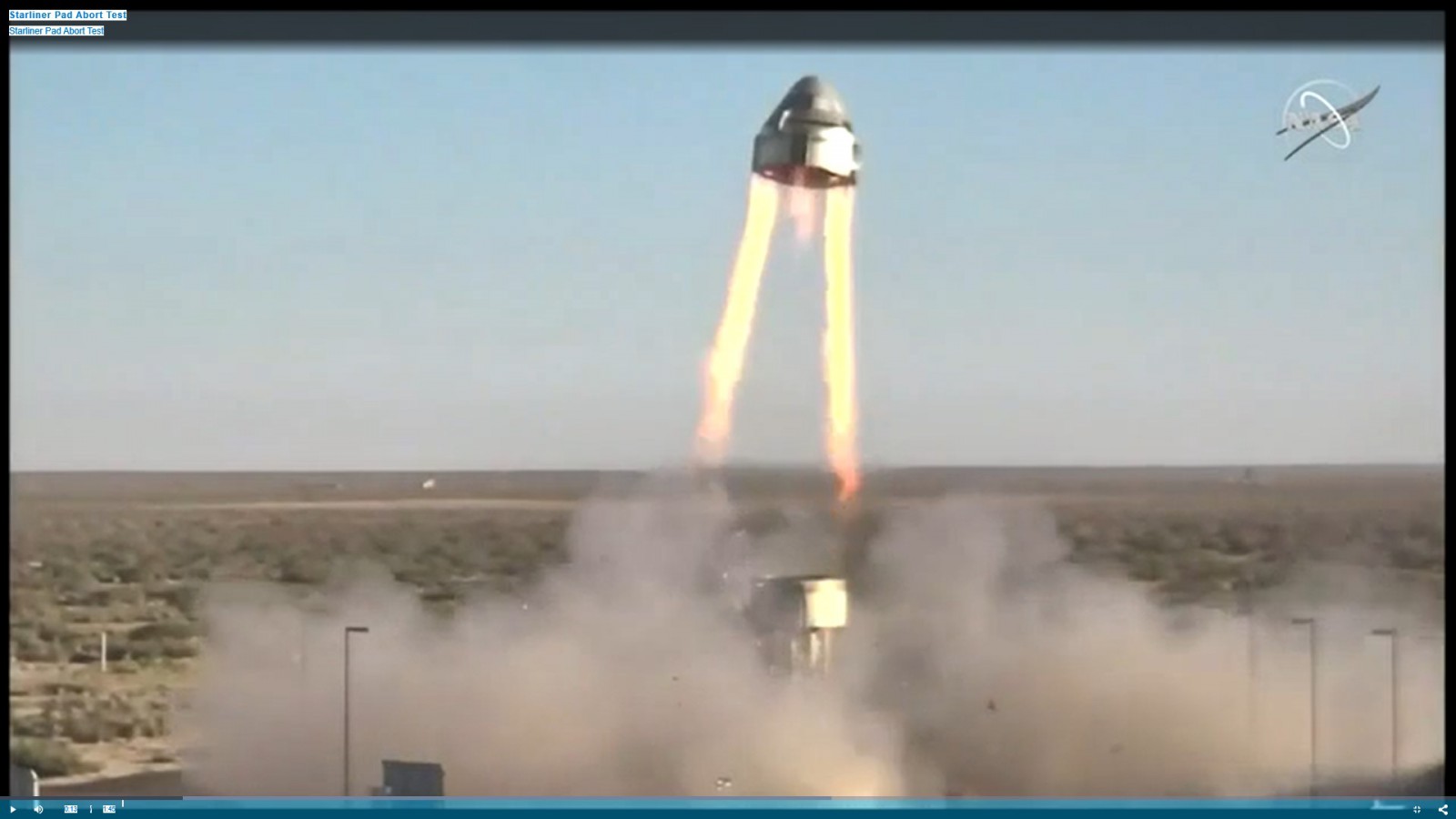Boeing's Starliner spacecraft passes crucial test
04 November, 2019
3 min read
By joining our newsletter, you agree to our Privacy Policy


The return to orbit of US manned spacecraft moved a step closer Monday with a successful abort test of Boeing’s CST-100 Starliner described as a critical milestone.
The two-minute test simulated a launch pad emergency as an uncrewed Starliner spacecraft lifted off under its own power from a test stand at the U.S. Army’s White Sands Missile Range in New Mexico.
Although only two of three parachutes deployed, Boeing said the vehicle was able to demonstrate the proper performance of numerous integrated systems needed to successfully propel the capsule away from its Atlas V rocket during ascent.
READ: Ryanair expects further delay in MAX deliveries to cut growth.
The test comes as Boeing gears up for a December 17 launch from Florida of an uncrewed demonstration mission to the International Space station.
Watch an edited video of the test:
[embed]https://twitter.com/i/status/1191359341170966528[/embed]
“The test team and spacecraft performed flawlessly,” Starliner program manager John Mulholland.
“Emergency scenario testing is very complex, and today our team validated that the spacecraft will keep our crew safe in the unlikely event of an abort.”
The test used four launch abort engines (LAEs) and several orbital maneuvering and attitude control (OMAC) thrusters.
The engines developed 90,000lbs of thrust to accelerate the Starliner away from the test stand and propel it a mile in just under 20 seconds before parachutes and the craft’s forward heat shield were deployed.
The service and crew modules separated after almost 34 seconds and the crew capsule descended slowly to a safe landing under the parachutes, jettisoning the base heat shield and deploying airbags before landing.
The crew module touched down 95 seconds after the abort engines fired.
“We’ve tested all these systems individually, so we know the propulsion system fires at the intended levels, and we know the parachutes can support the vehicle and safely slow it down, but the real test is making sure those systems can perform together,’’ said Boeing’s pad abort test flight director Alicia Evans.
“That’s when you know these systems are ready to fly people.”
Experts will now comb through the data from the test and examine the crew module, which can be reused up to 10 times.
The December 17 orbital test will see a Starliner launched from Cape Canaveral Air Force Station on an Atlas V rocket.
It will dock with the International ASpace Station and stay about a week before landing at White Sands.
Space X is testing a rival vehicle called the Crew Dragon which has already flown into orbit and is expected to also conduct an abort test this month or next.
Both projects have faced delays, including an explosion involving the Crew Dragon capsule that visited the ISS during a subsequent test of the escape engines.
Next Article
2 min read
Qantas triples profit but misses mark

Get the latest news and updates straight to your inbox
No spam, no hassle, no fuss, just airline news direct to you.
By joining our newsletter, you agree to our Privacy Policy
Find us on social media
Comments
No comments yet, be the first to write one.
